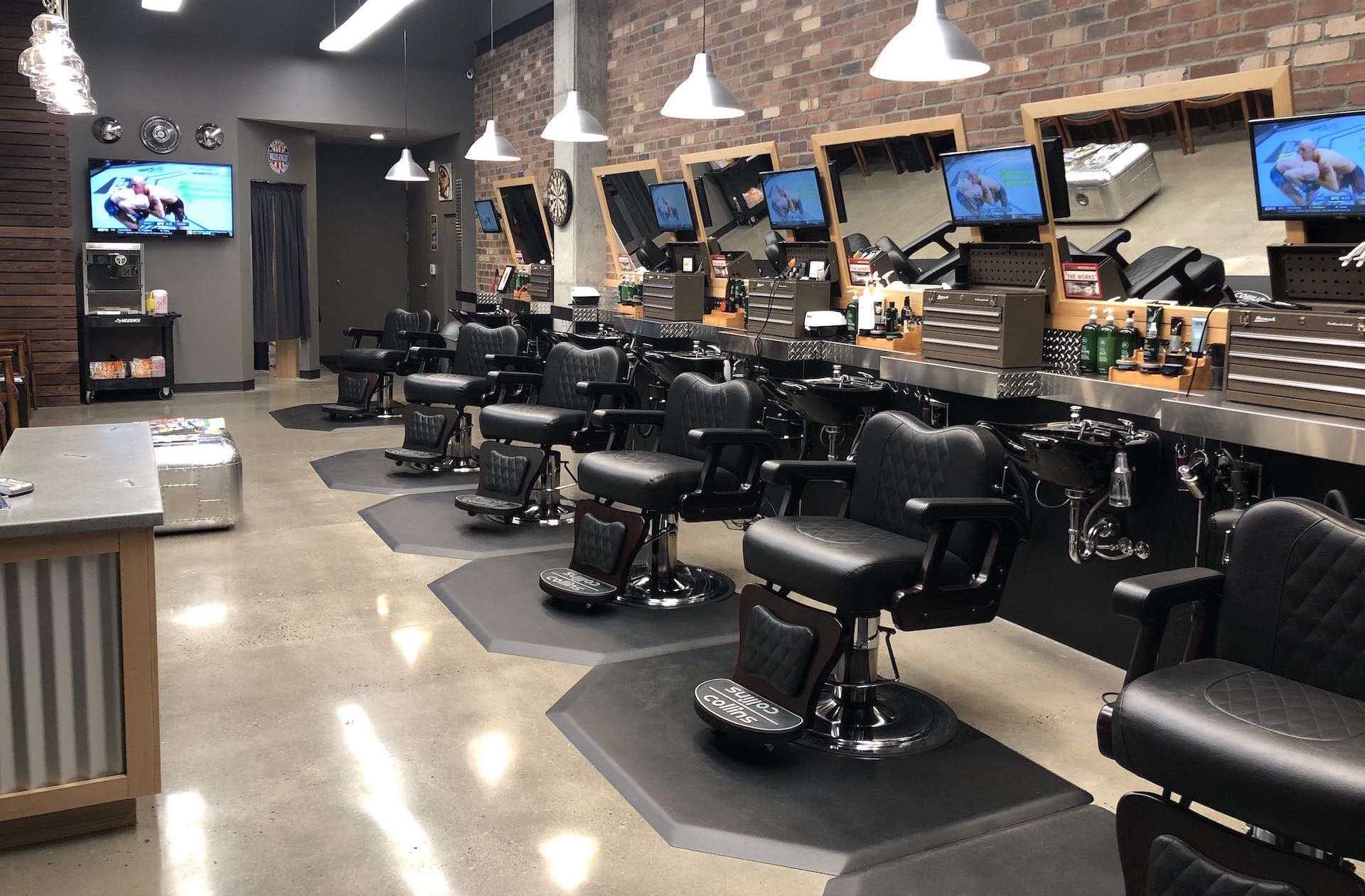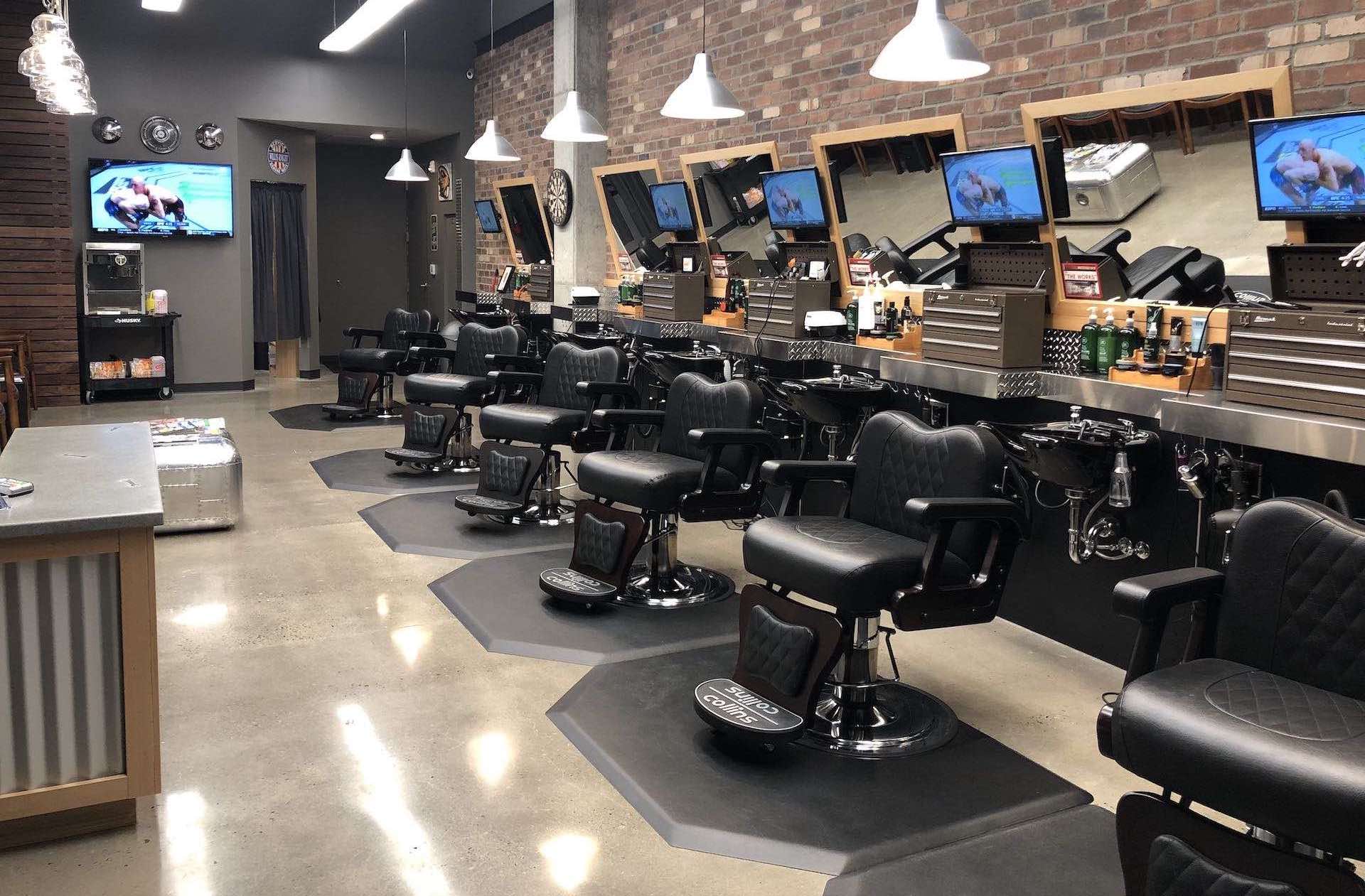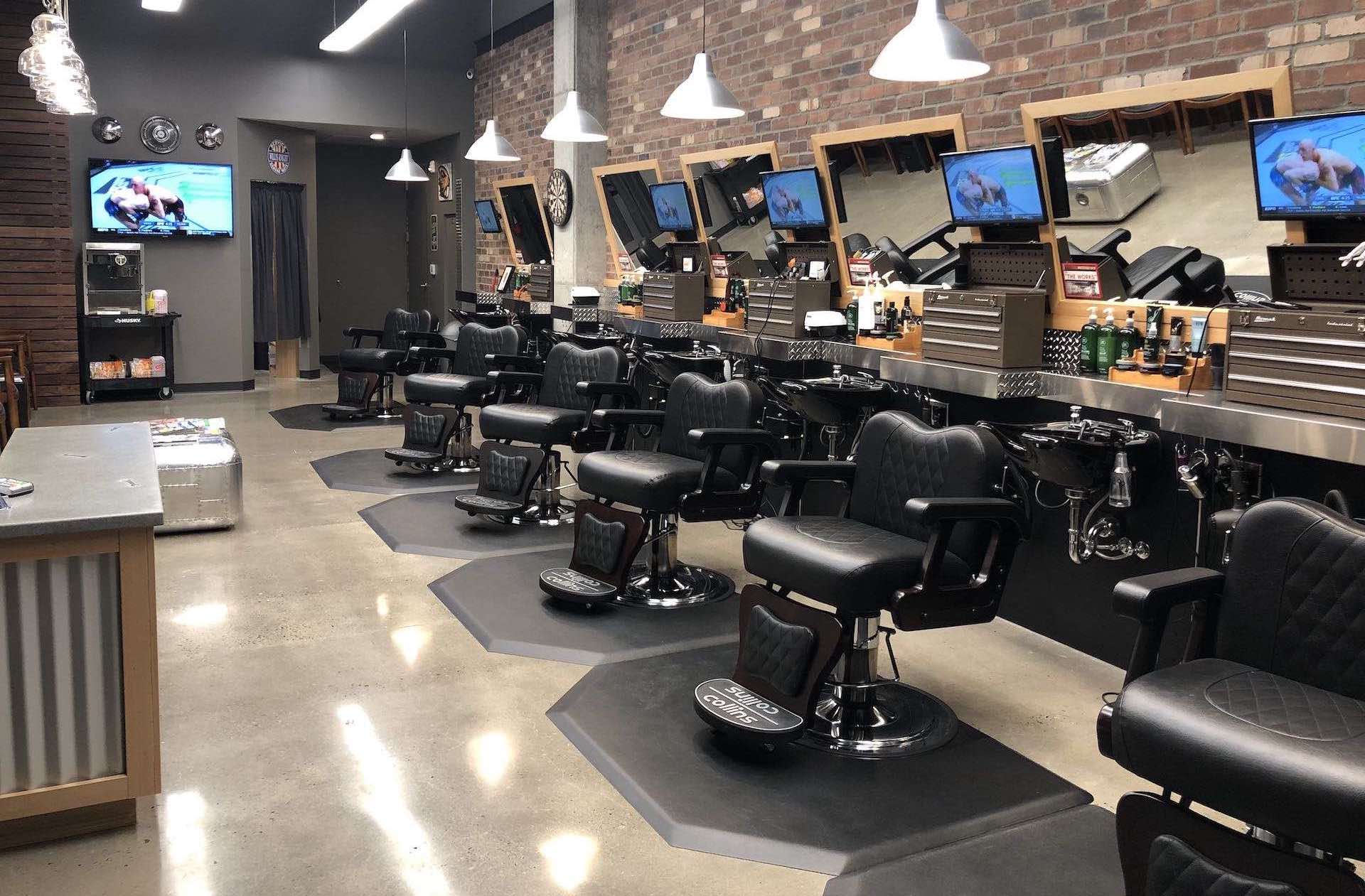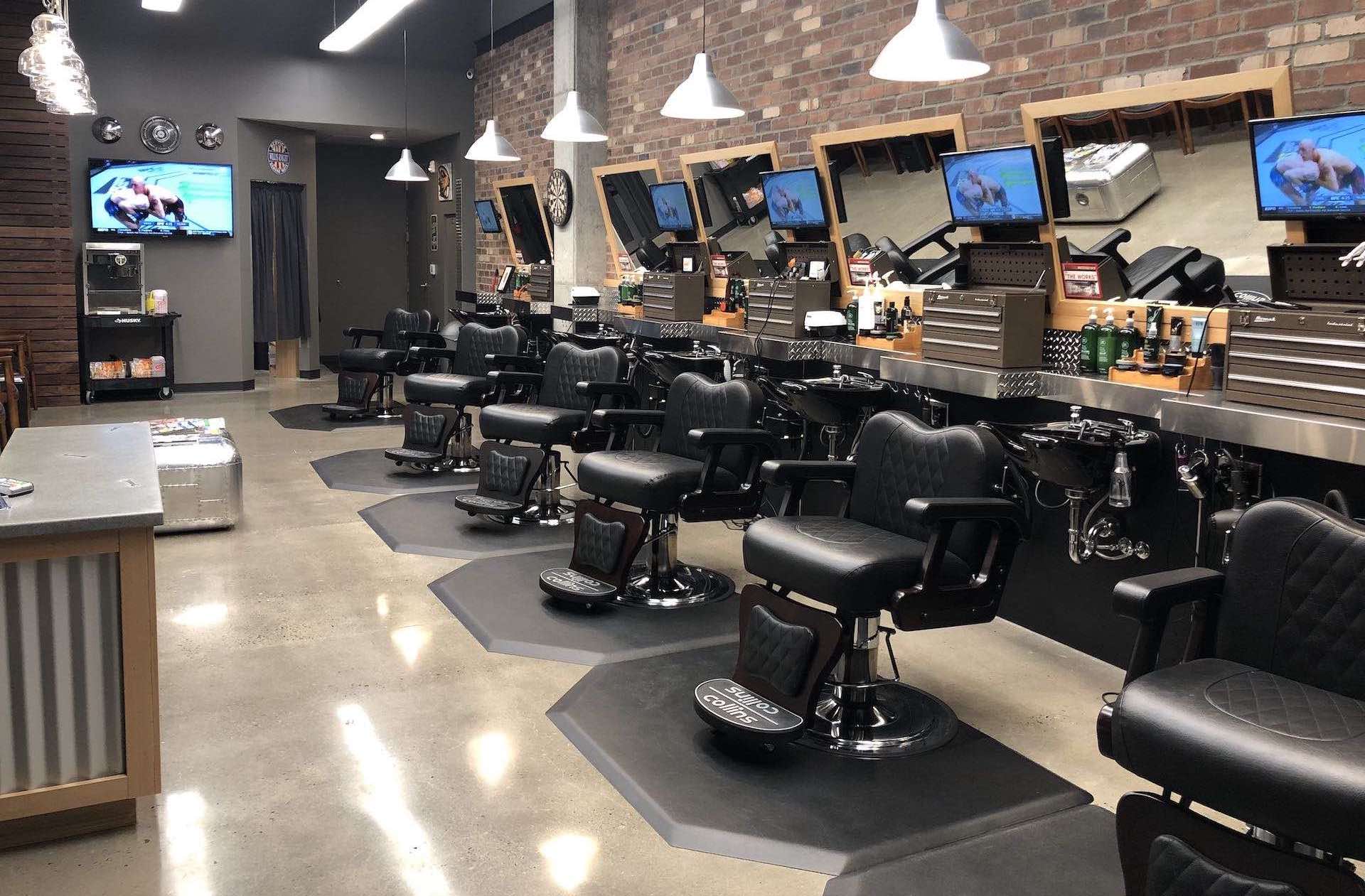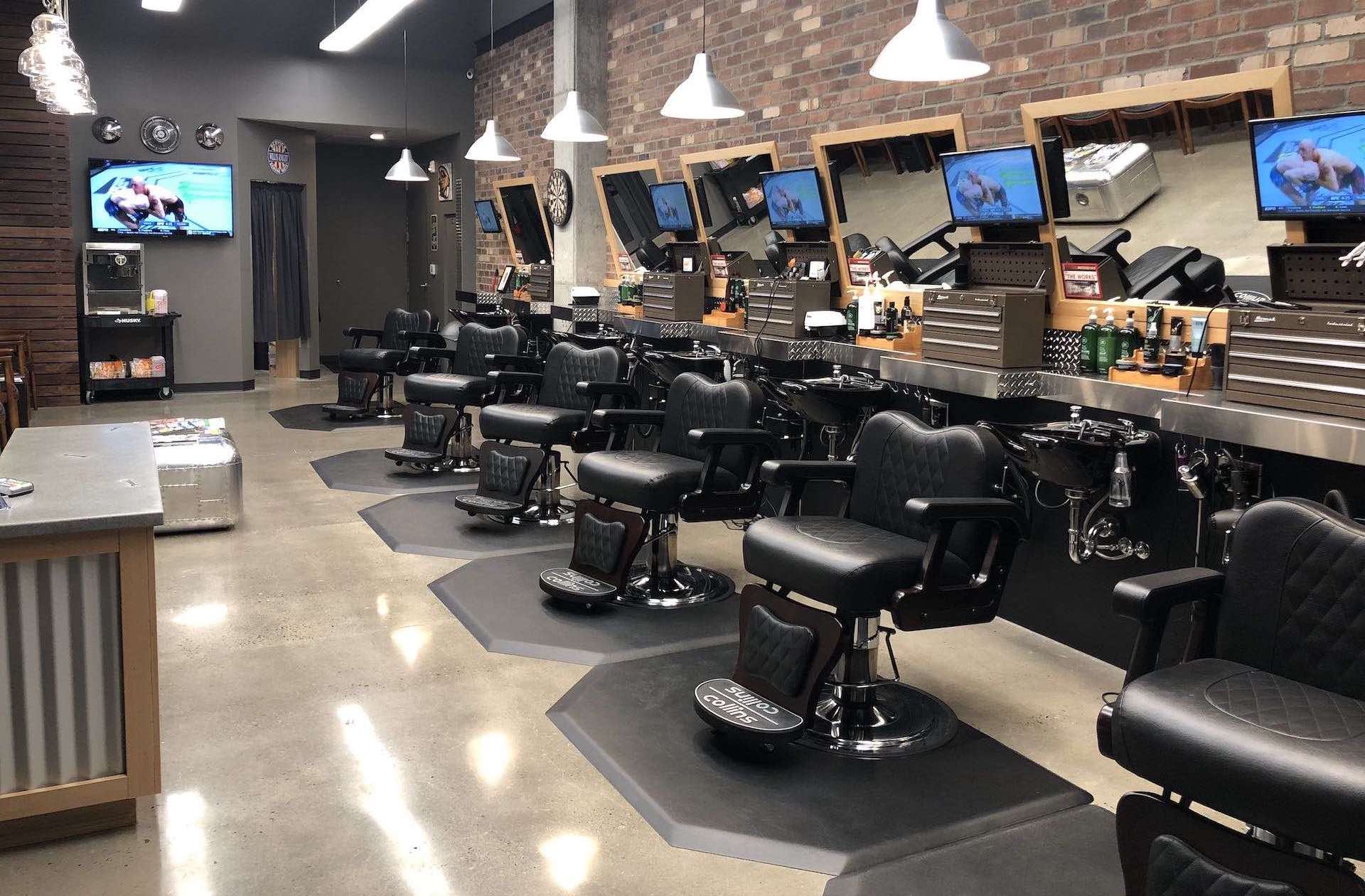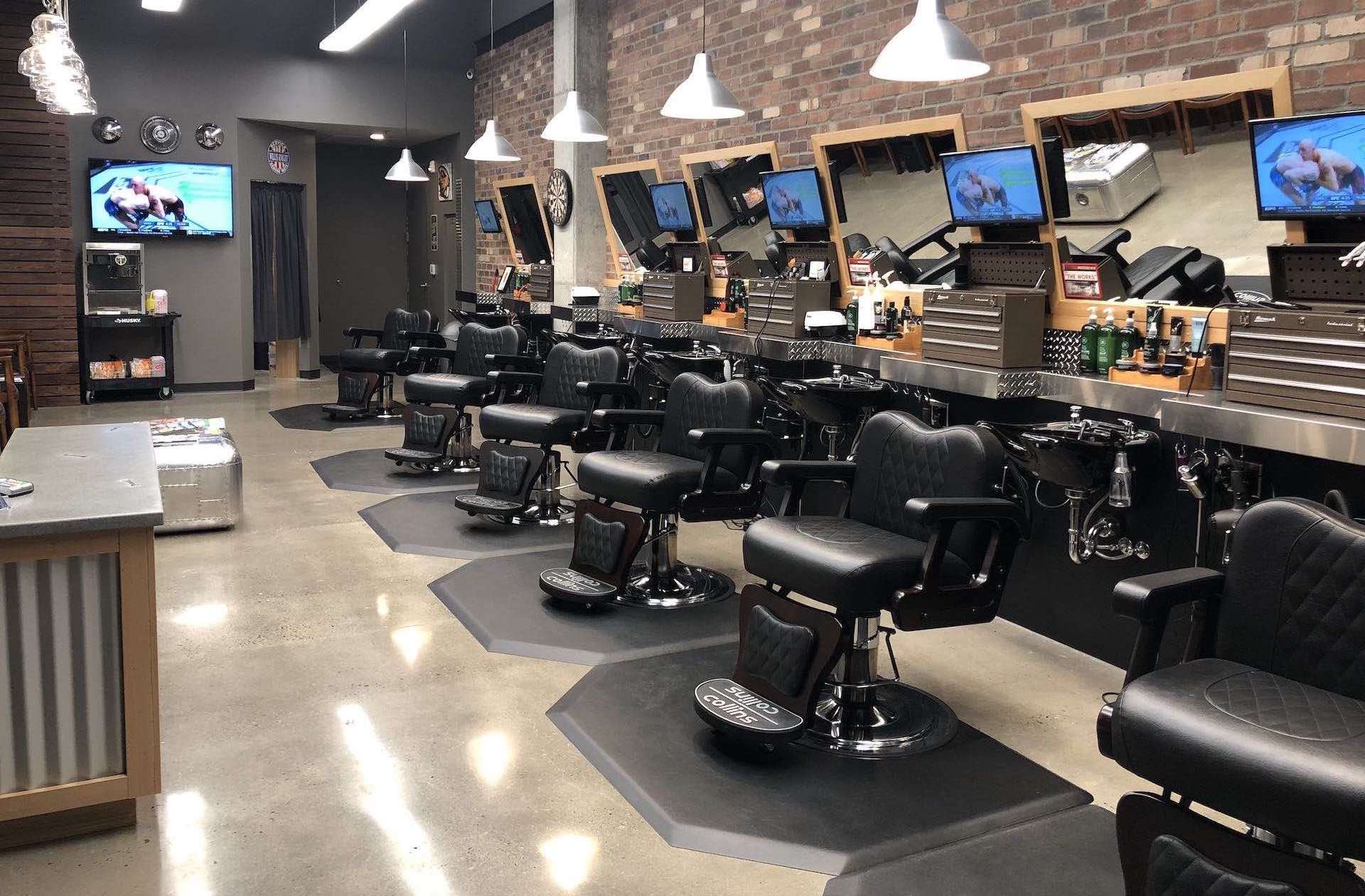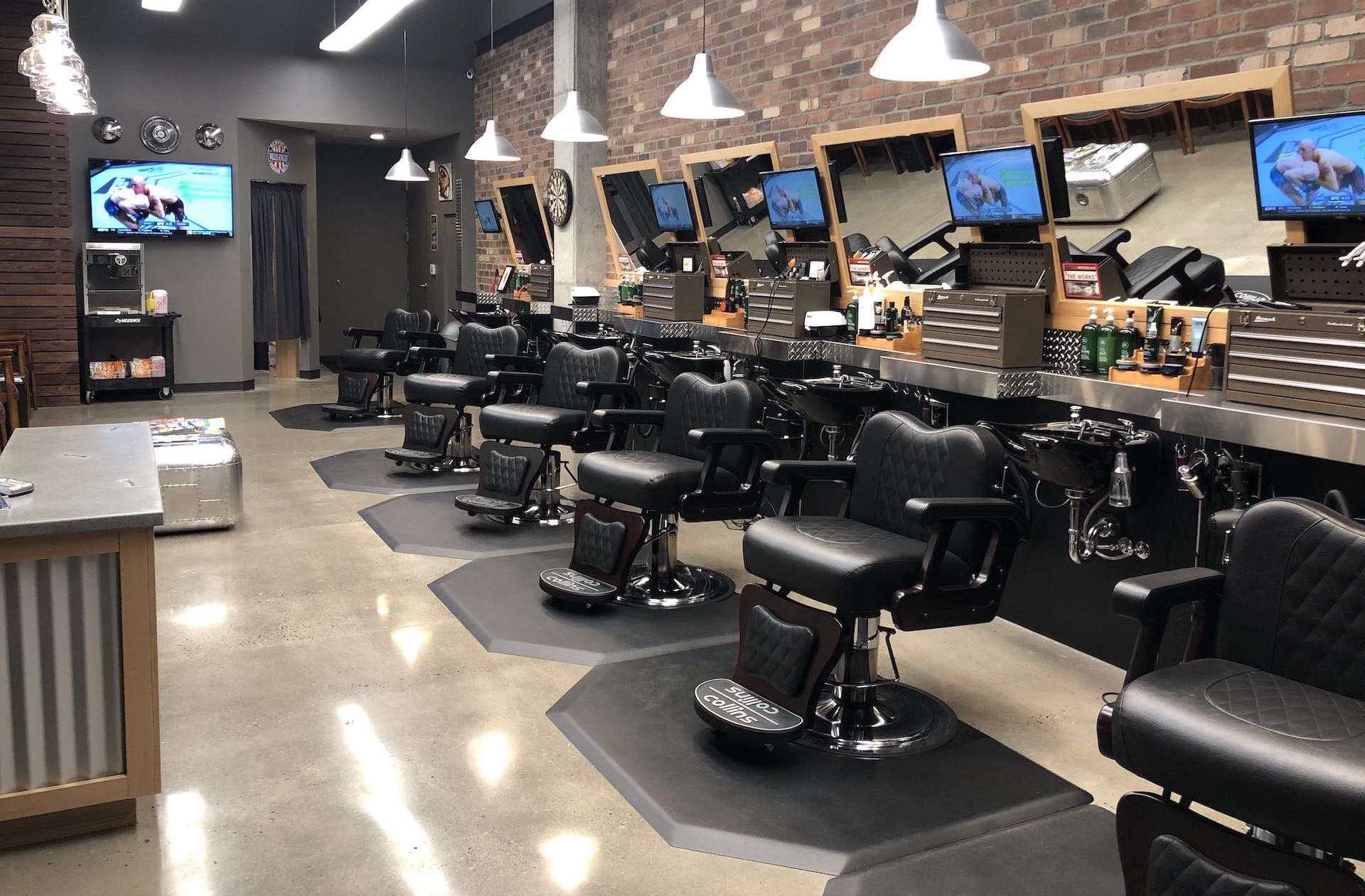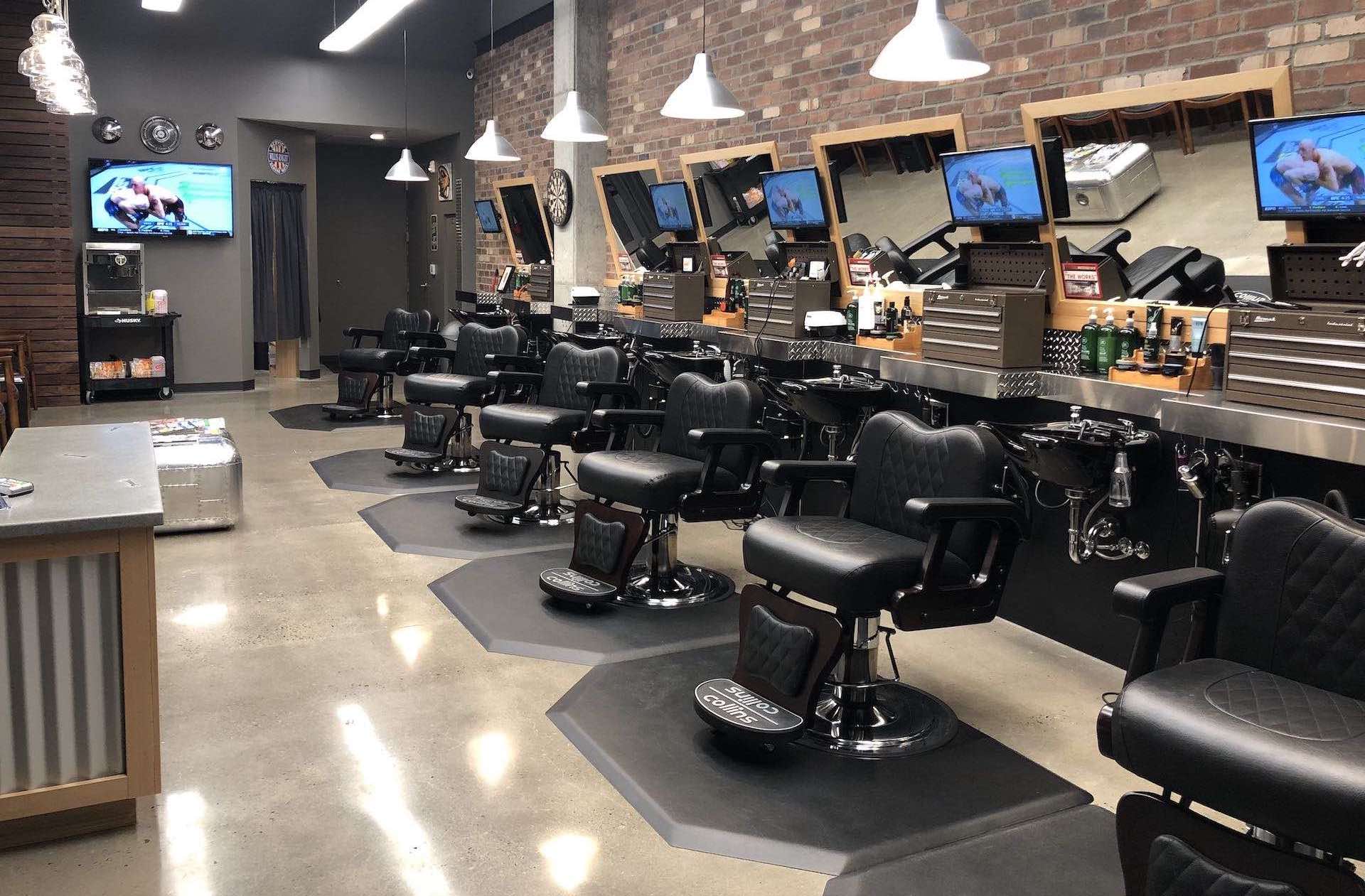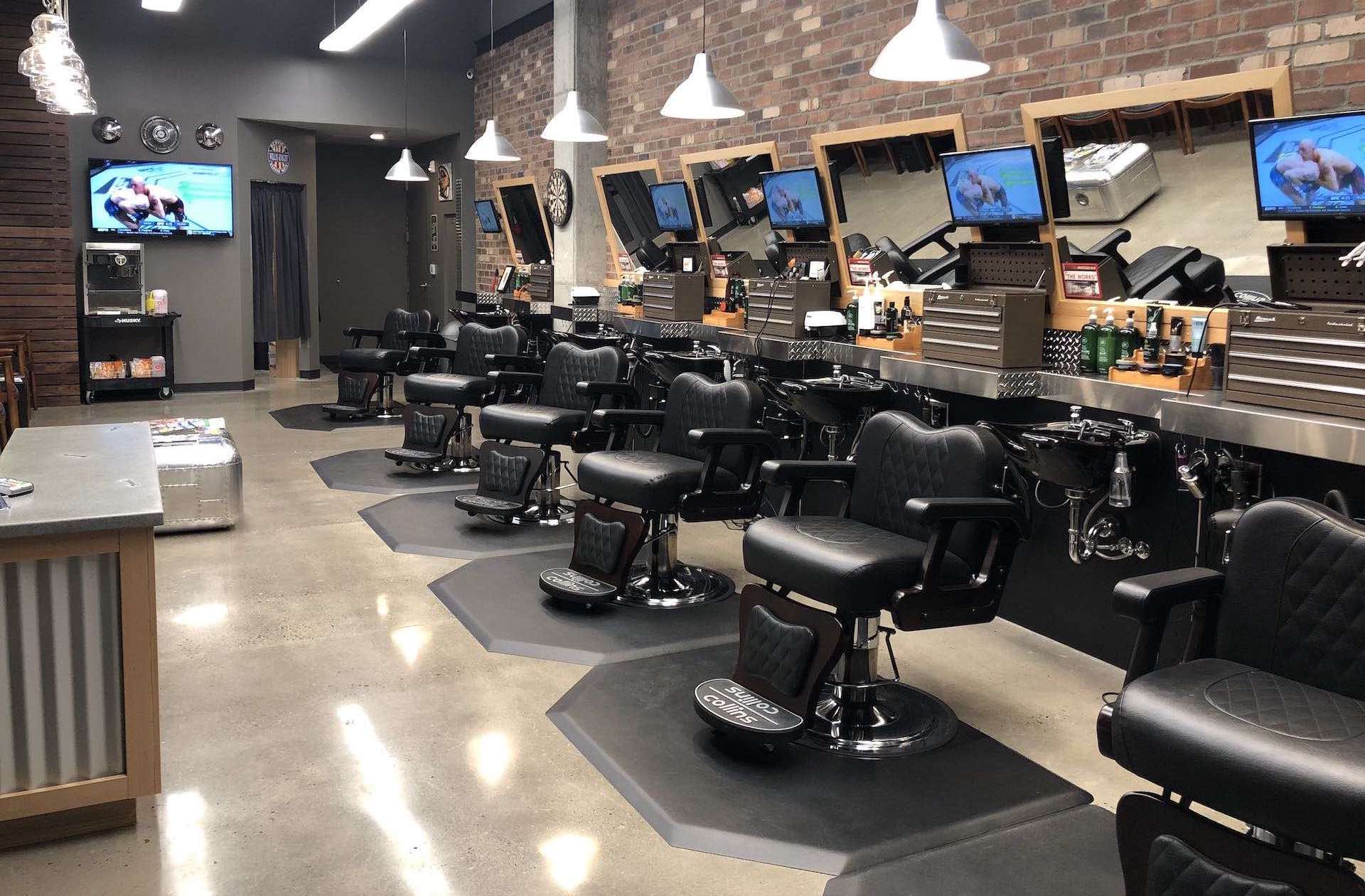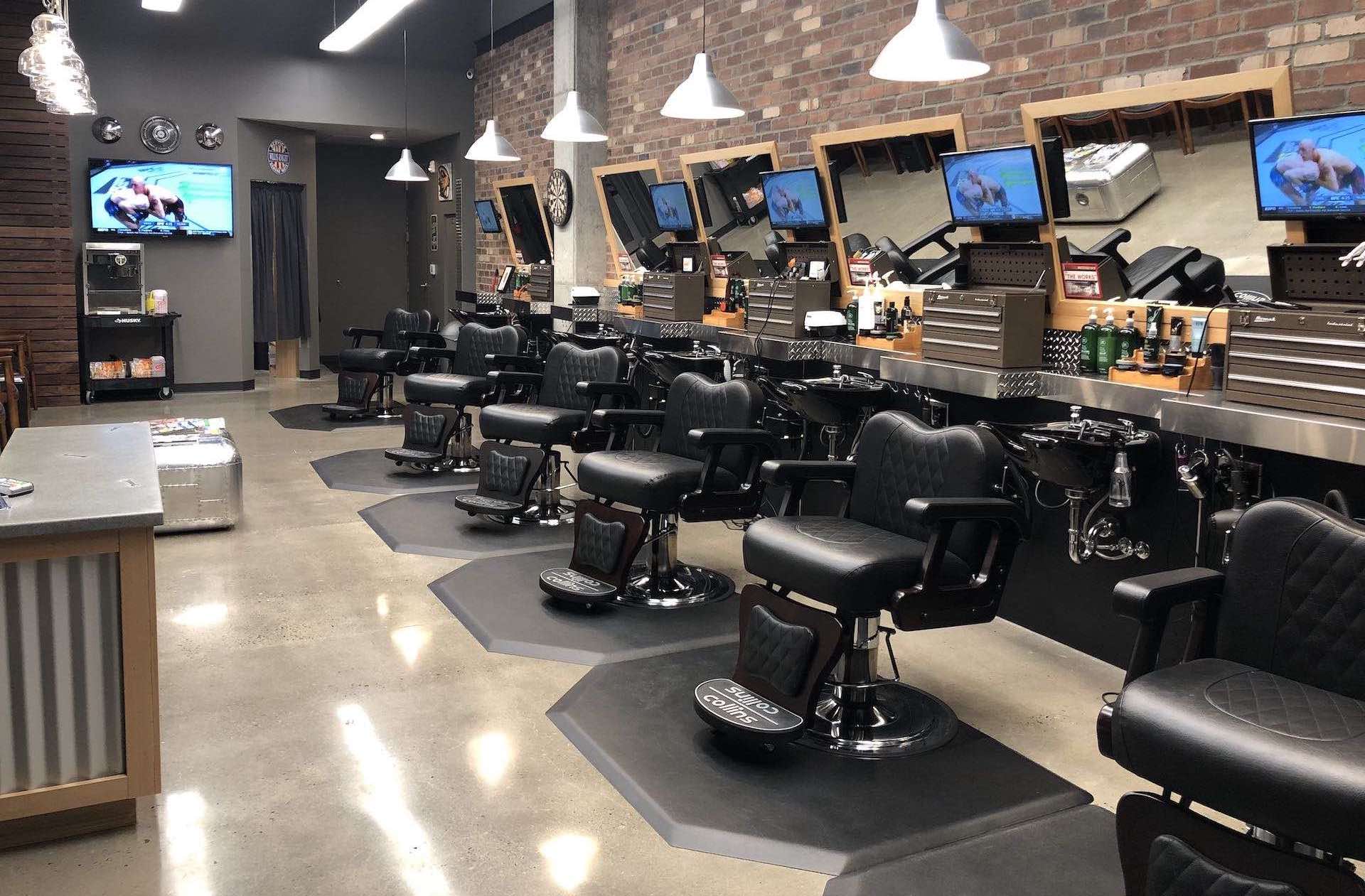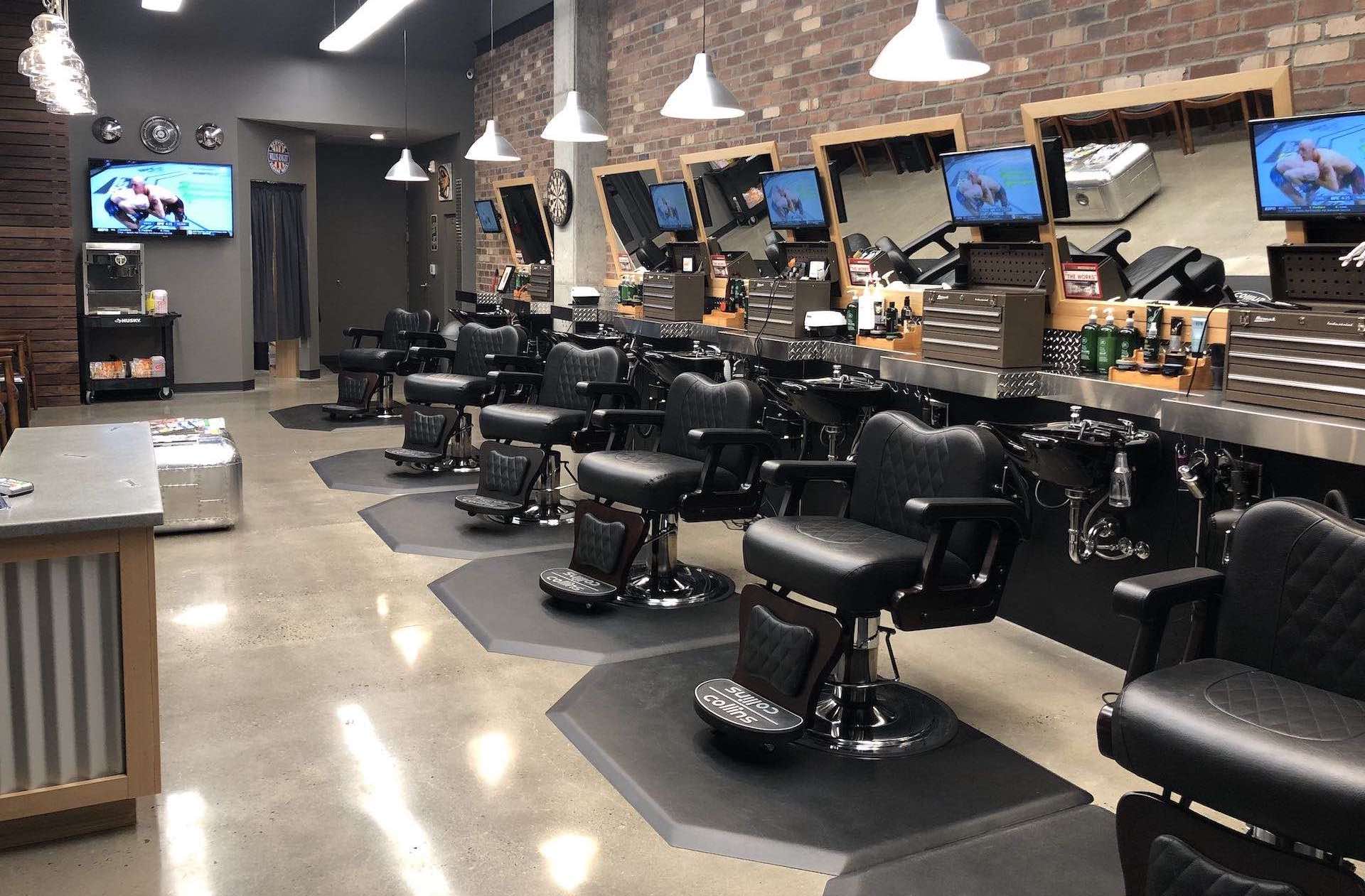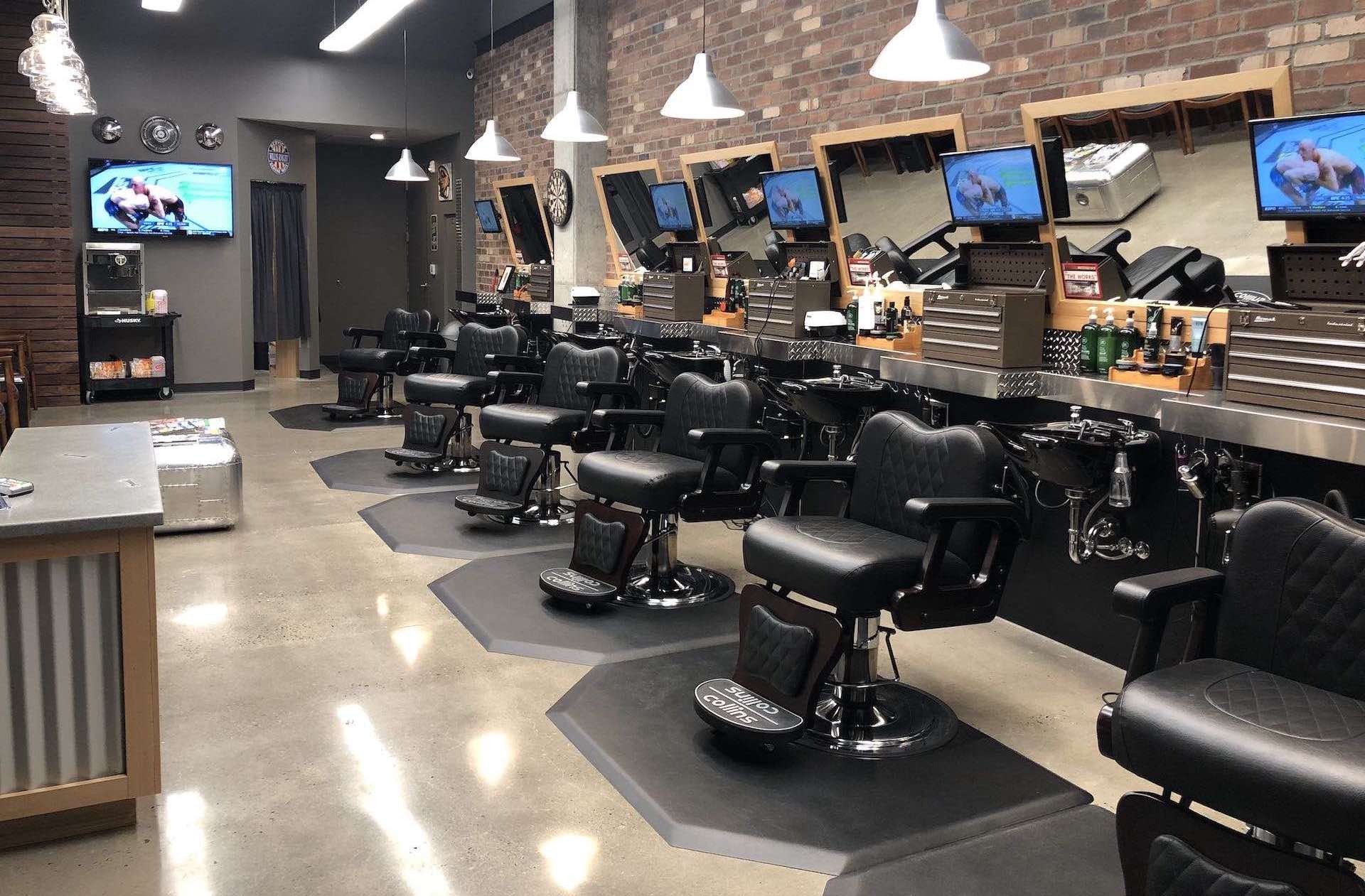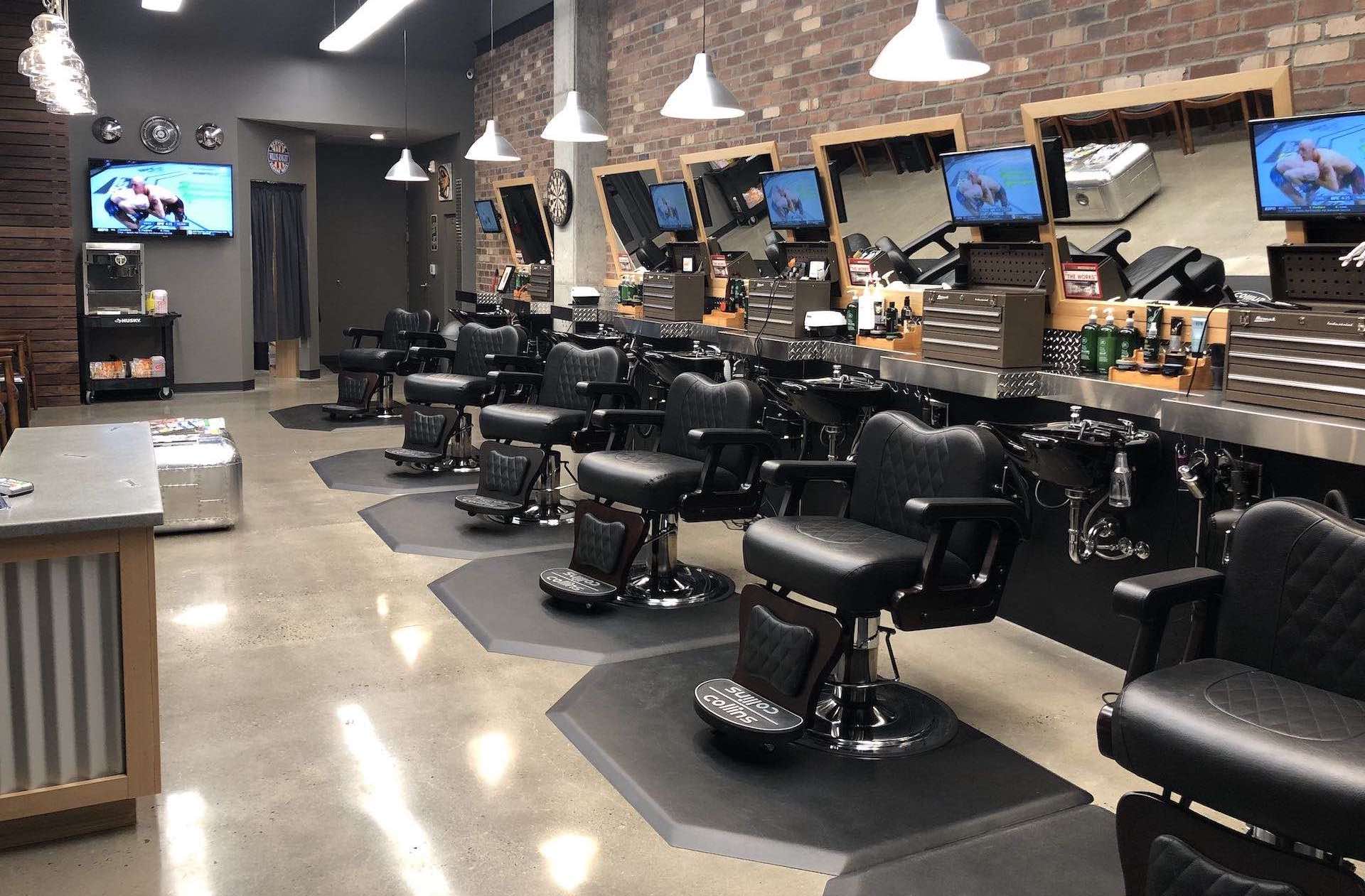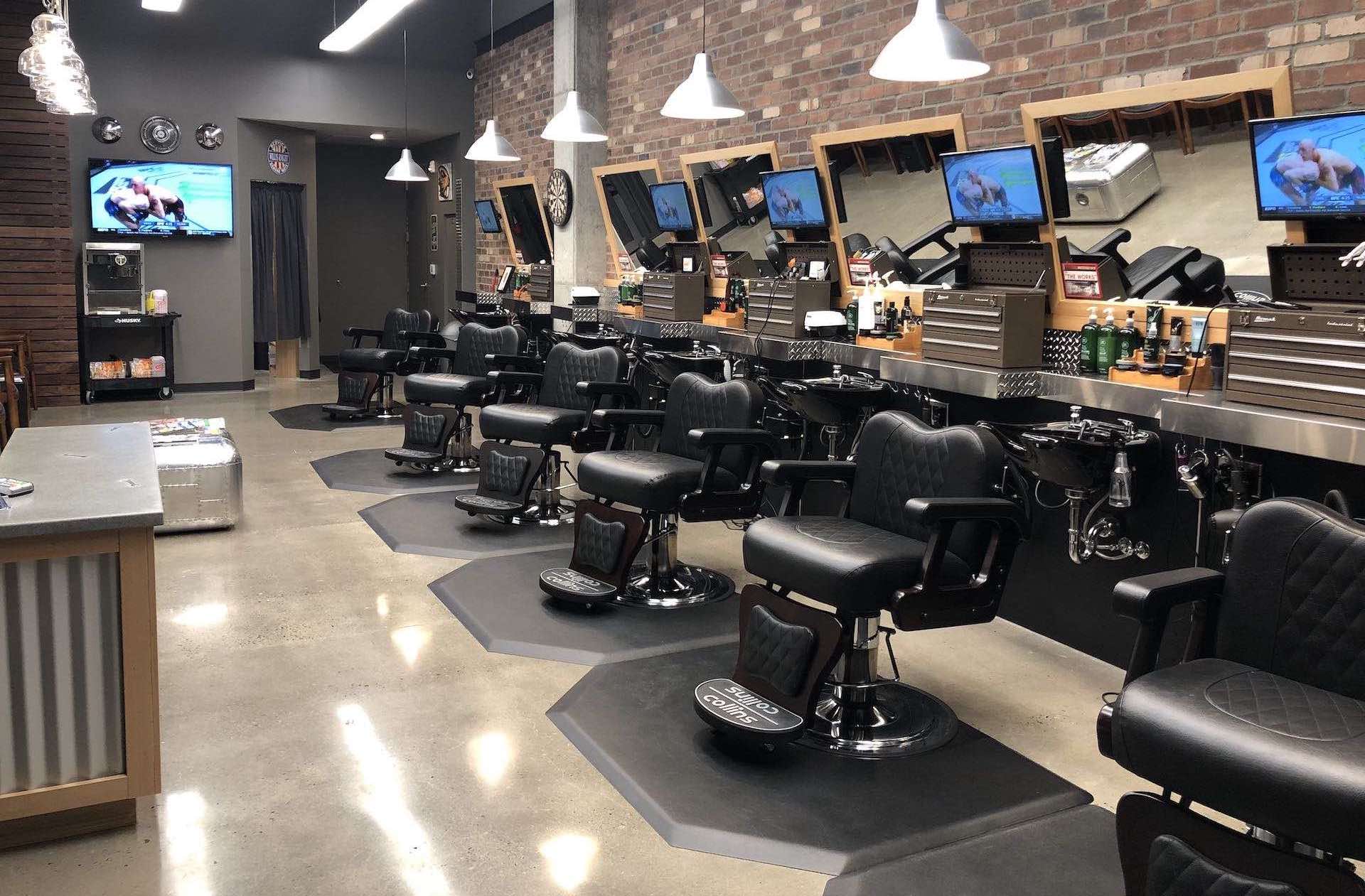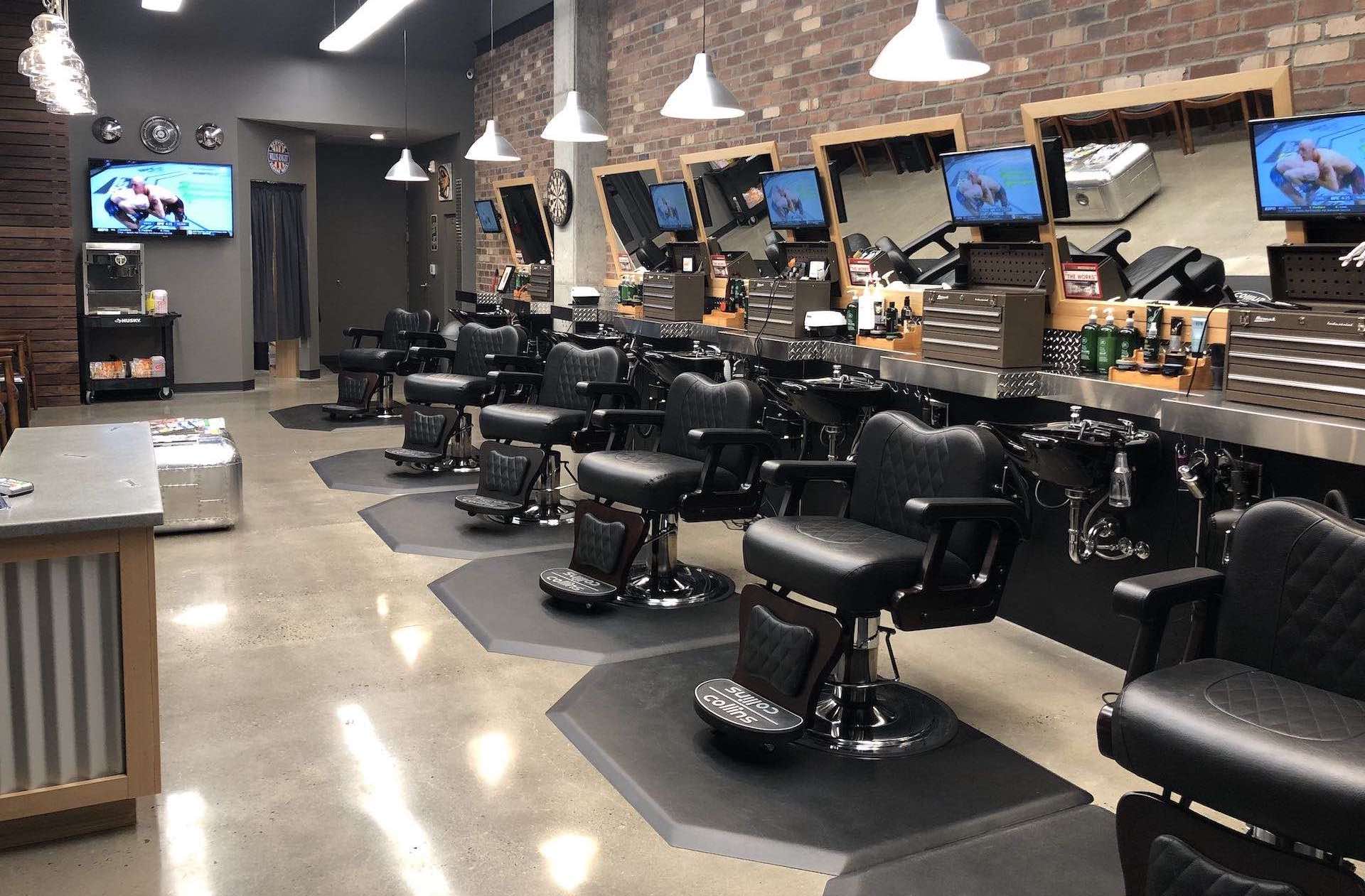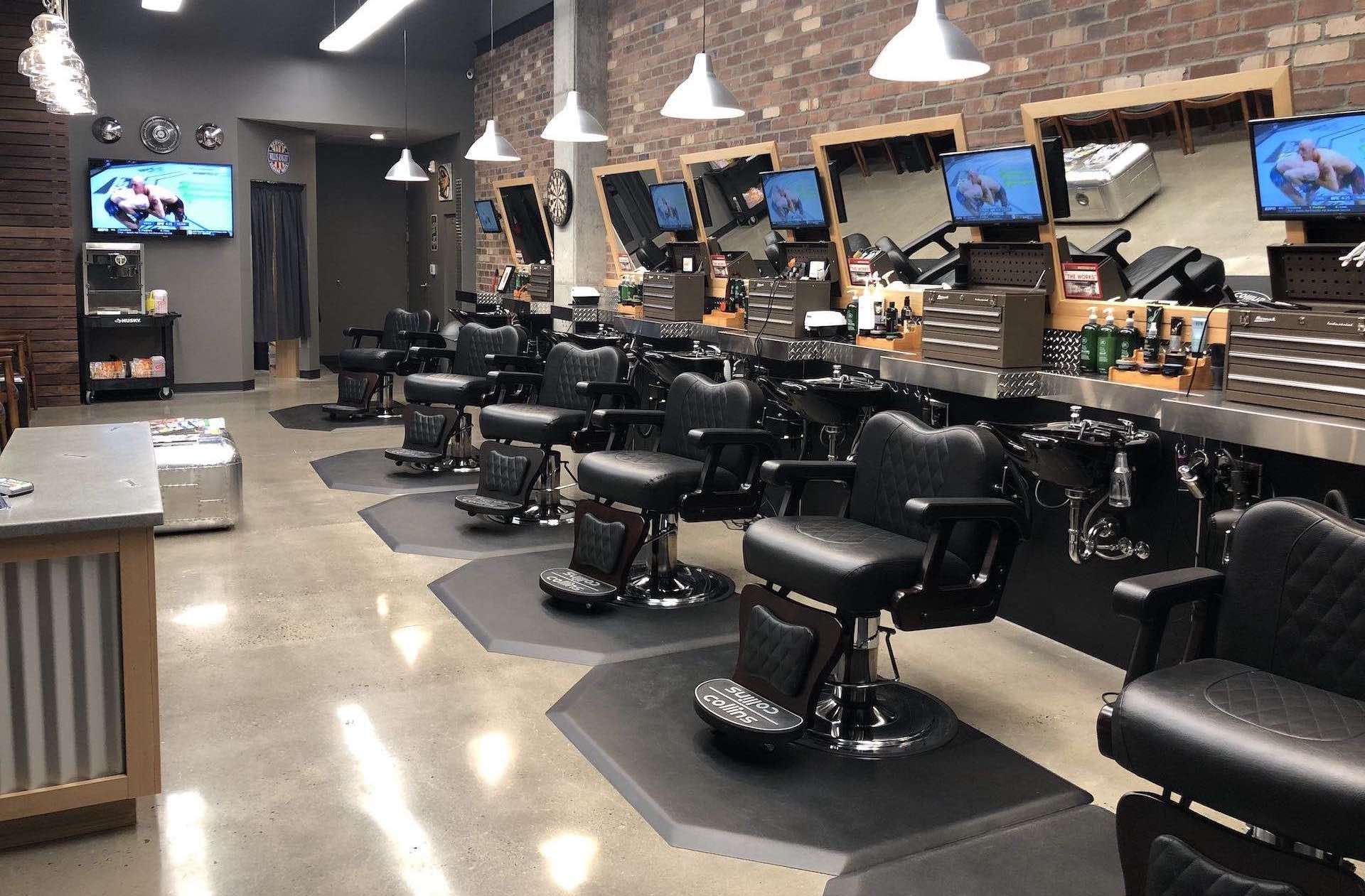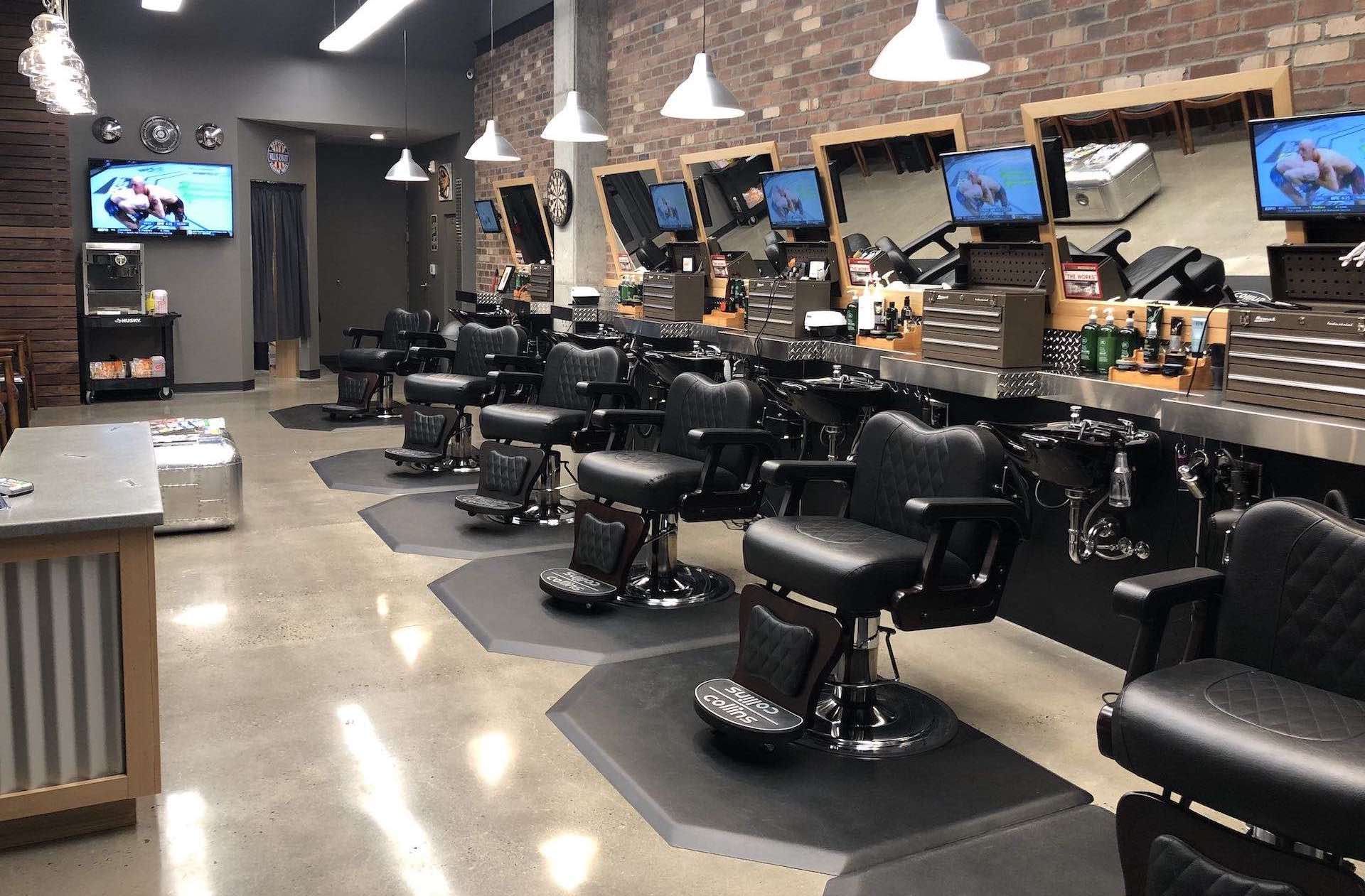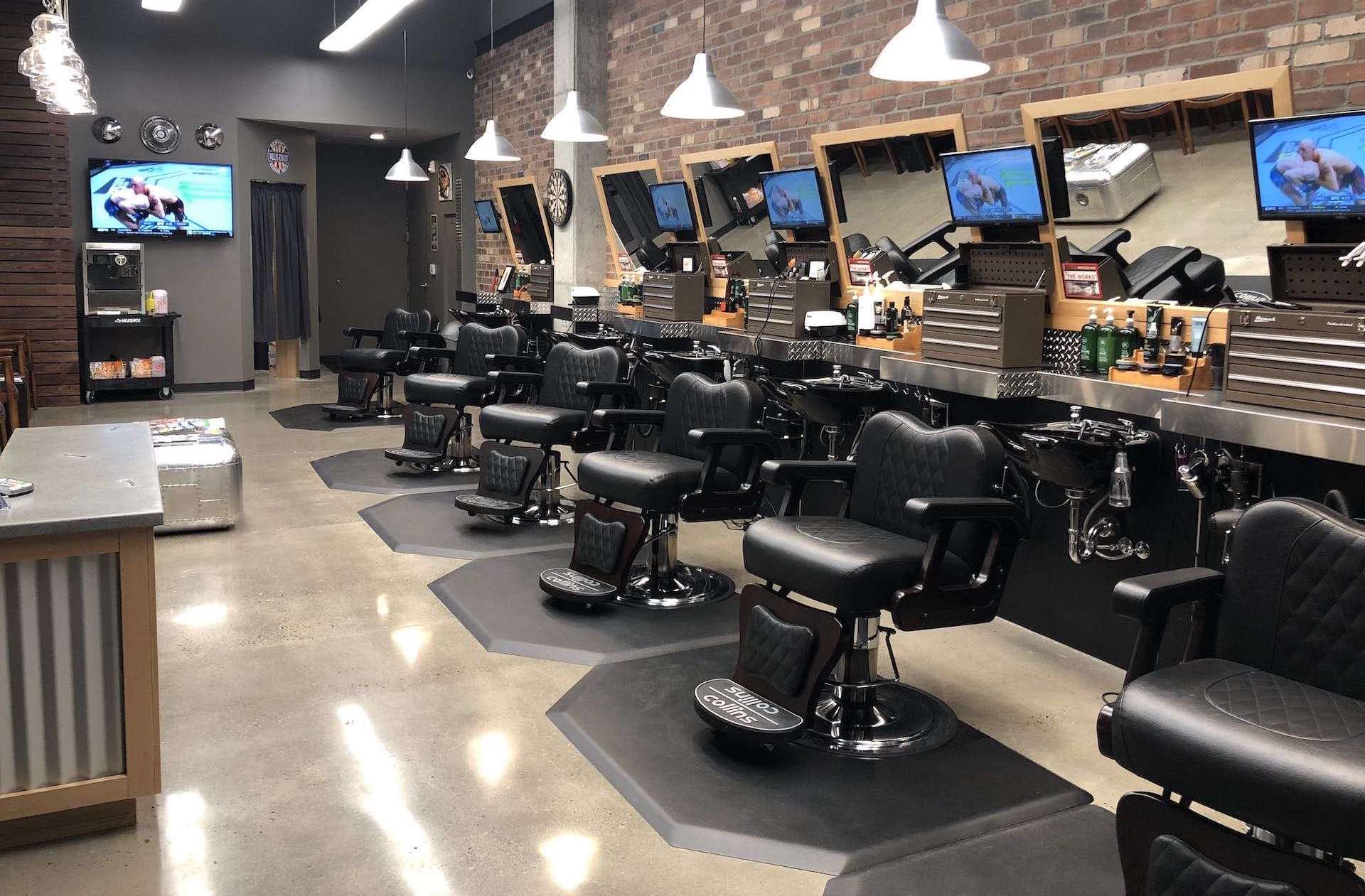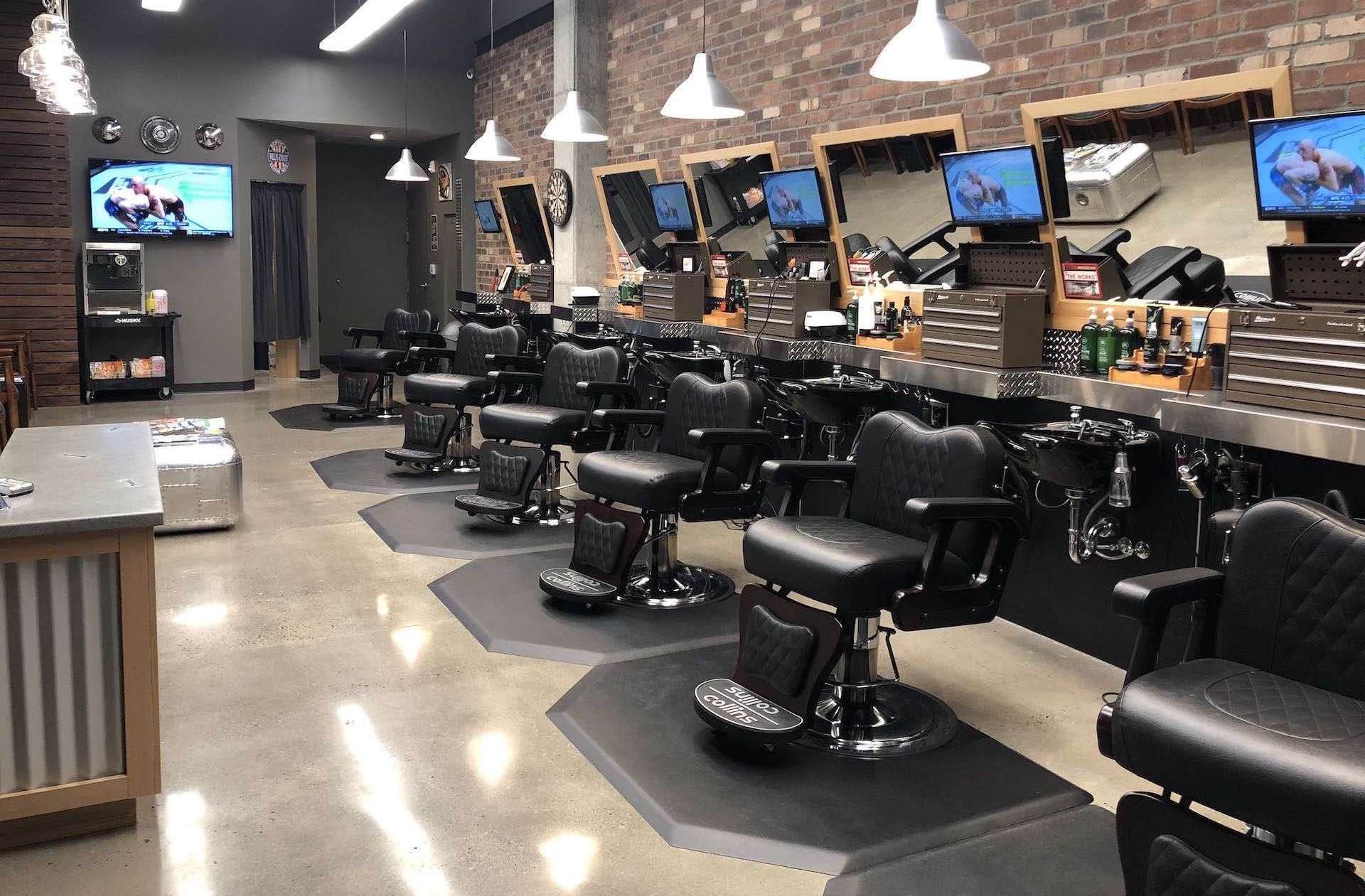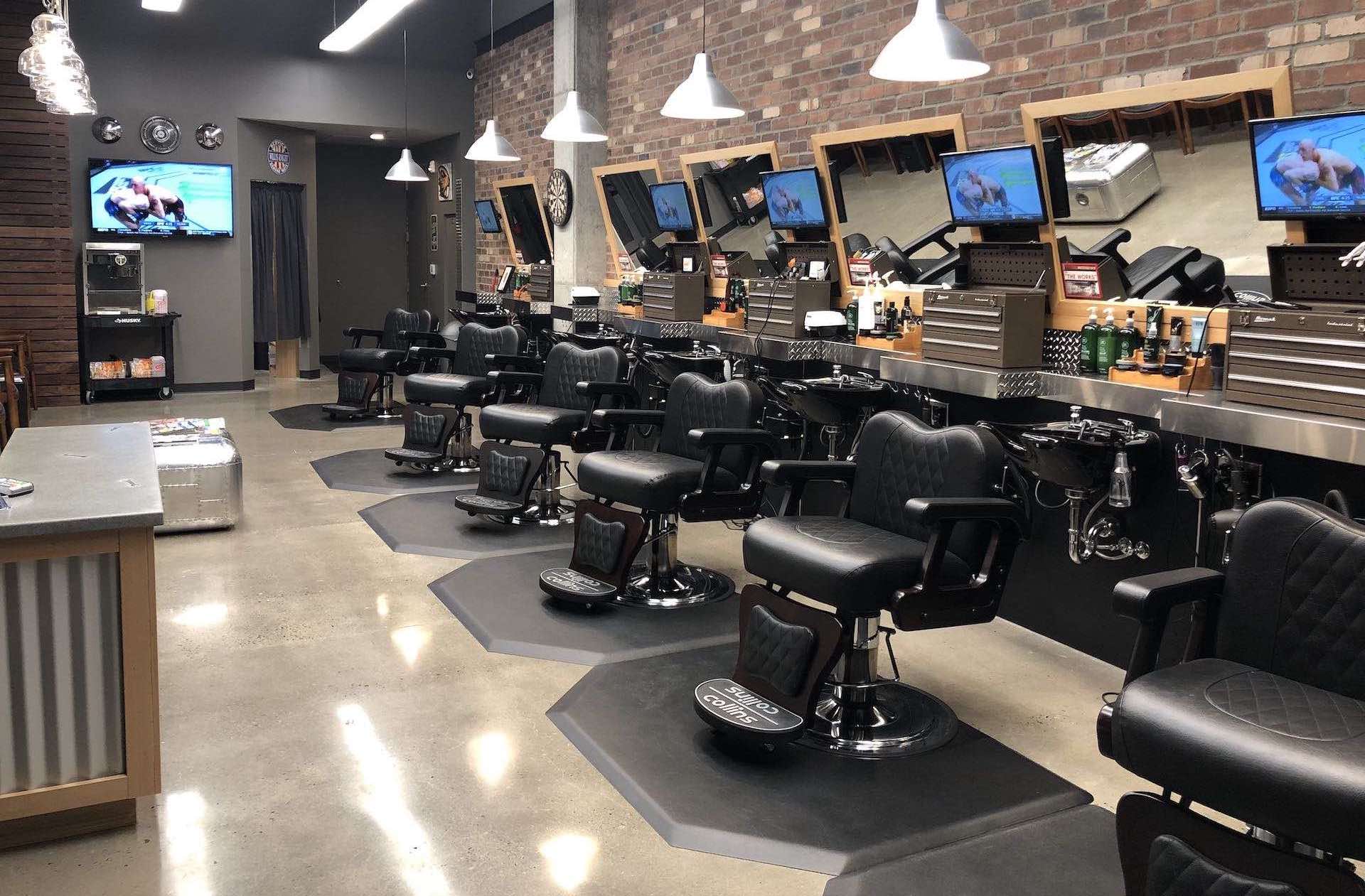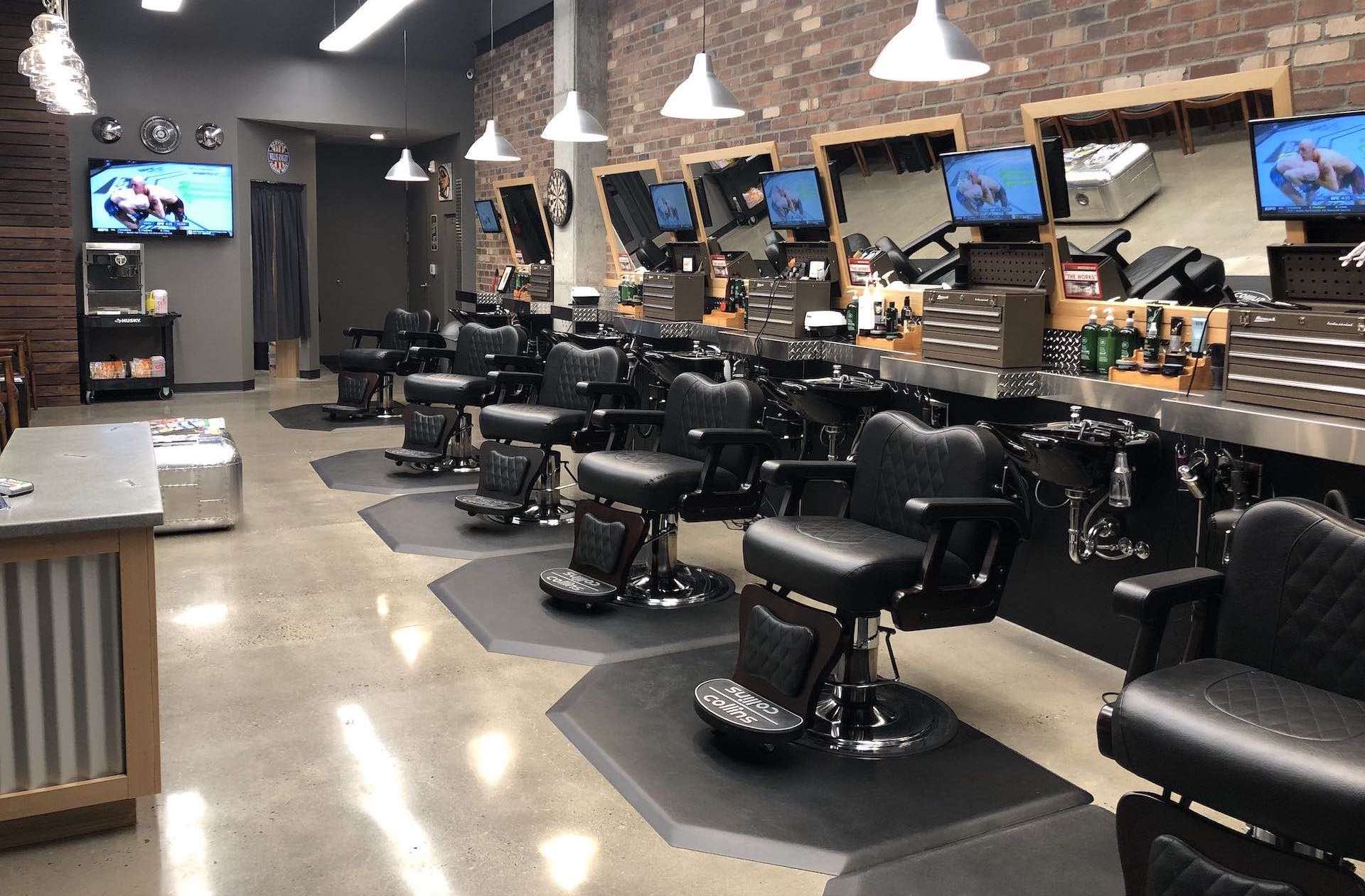Traditional barber shops represent more than just a place to get a haircut – they're community institutions that blend timeless craftsmanship with modern business operations. From the classic red, white, and blue pole to the familiar sound of clippers and the art of the straight razor shave, traditional barber shops maintain a unique place in British high streets. However, like any business, they face specific risks that require comprehensive insurance protection.
Understanding the Traditional Barber Shop Business Model
Traditional barber shops differ significantly from modern hair salons or chain establishments. They typically focus on classic men's grooming services including haircuts, beard trims, traditional wet shaves, and mustache grooming. Many maintain the authentic atmosphere with vintage chairs, traditional tools, and time-honored techniques passed down through generations.
These businesses often operate as small, family-run establishments with a loyal local clientele. The personal relationship between barber and customer, built over years of service, forms the foundation of their business model. This traditional approach, while charming and effective, creates unique insurance considerations that generic business policies may not adequately address.
Key Insurance Risks for Traditional Barber Shops
Professional Liability and Treatment Risks
Traditional barber shops face unique professional liability exposures, particularly when offering services like straight razor shaves, beard trimming, and facial treatments. The use of sharp instruments near customers' faces and necks creates potential for accidental cuts or nicks. While experienced barbers are skilled professionals, accidents can happen even with the most careful practitioners.
Skin reactions to traditional shaving products, aftershaves, or oils can also occur, particularly with customers who have sensitive skin or undisclosed allergies. The intimate nature of traditional barbering services means that any incident can result in claims for pain, suffering, and potential scarring.
Public Liability Exposures
The traditional barber shop environment presents several public liability risks. Customers may slip on hair clippings, trip over equipment, or be injured by falling objects. The use of hot towels and steaming equipment creates burn risks, while the application of various grooming products can lead to allergic reactions or skin irritation.
Vintage barber chairs, while authentic and appealing, may present mechanical risks if not properly maintained. The hydraulic systems, reclining mechanisms, and swivel functions require regular servicing to prevent customer injuries from equipment failure.
Product Liability Concerns
Traditional barber shops often use specialized products including pomades, aftershaves, beard oils, and traditional shaving soaps. If these products cause adverse reactions, allergic responses, or skin damage, the shop could face product liability claims. This is particularly relevant when using artisanal or specialty products that may not have undergone extensive testing.
The sale of grooming products to customers for home use extends this liability beyond the shop premises. If a customer experiences problems with a purchased product, the barber shop could be held responsible for damages.
Property and Equipment Protection
Traditional barber shops typically house valuable vintage equipment, antique chairs, mirrors, and specialized tools. Classic barber chairs can be worth thousands of pounds, while collections of straight razors, vintage clippers, and traditional implements represent significant investments.
The authentic décor that makes traditional barber shops appealing – wooden fixtures, vintage signage, and period furnishings – requires adequate property coverage. Fire damage could be particularly devastating, as replacing authentic vintage items may be impossible or extremely expensive.
Business Interruption Risks
Traditional barber shops rely heavily on regular customer appointments and walk-in trade. Any interruption to business operations can quickly impact cash flow and profitability. Fire, flood, or other property damage could force temporary closure, resulting in lost income during repair periods.
The personal nature of traditional barbering means that if the primary barber is injured or unable to work, the business may struggle to continue operating. Many traditional shops are one-person operations where the owner's skills and reputation drive the entire business.
Essential Insurance Coverage for Traditional Barber Shops
Professional Indemnity Insurance
Professional indemnity insurance is crucial for traditional barber shops, covering claims arising from professional services. This includes protection against allegations of negligent treatment, accidental injury during services, and claims related to the quality or outcome of grooming services.
Coverage should extend to all traditional services offered, including straight razor shaves, beard sculpting, mustache trimming, and any facial treatments. The policy should also cover legal defense costs and any compensation awarded to injured customers.
Public Liability Insurance
Comprehensive public liability coverage protects against customer injuries on the premises. This includes slips, trips, falls, and injuries from equipment or fixtures. Coverage should be sufficient to handle serious injury claims, as accidents in barber shops can potentially result in significant damages.
The policy should cover both the shop premises and any temporary locations where services might be provided, such as home visits or special events.
Product Liability Insurance
Product liability coverage is essential for any grooming products used or sold by the barber shop. This protects against claims arising from adverse reactions to shampoos, aftershaves, pomades, or other products applied during services or sold to customers.
Coverage should extend to both branded products purchased from suppliers and any custom or house-blend products created by the shop.
Commercial Property Insurance
Property insurance should adequately cover the full replacement value of all equipment, fixtures, and stock. This includes vintage barber chairs, antique mirrors, collections of traditional tools, and all décor and furnishings that contribute to the shop's authentic atmosphere.
Coverage should include protection against fire, flood, theft, and vandalism. Given the specialized nature of traditional barber equipment, policies should provide adequate coverage for sourcing replacement vintage items or custom reproductions.
Business Interruption Insurance
Business interruption coverage provides financial protection during periods when the shop cannot operate normally. This includes coverage for lost income, ongoing expenses, and additional costs incurred to minimize the interruption period.
For traditional barber shops, this coverage is particularly important as the specialized nature of the business may require longer recovery periods to source replacement equipment or find temporary premises.
Employers' Liability Insurance
If the barber shop employs staff, employers' liability insurance is legally required. This covers claims from employees who suffer injury or illness as a result of their work. In barber shops, this might include repetitive strain injuries, cuts from equipment, or respiratory issues from product exposure.
Key Person Insurance
For traditional barber shops where the business depends heavily on the owner's skills and reputation, key person insurance provides crucial protection. This coverage helps maintain business operations if the key barber is unable to work due to illness or injury.
Specialized Considerations for Traditional Barber Shops
Vintage Equipment Coverage
Traditional barber shops often rely on vintage or antique equipment that may be difficult or impossible to replace. Insurance policies should provide agreed value coverage for irreplaceable items, ensuring adequate compensation if equipment is damaged or destroyed.
Regular professional appraisals help establish accurate values for vintage barber chairs, antique mirrors, and collections of traditional tools. This documentation supports insurance claims and ensures adequate coverage limits.
Traditional Service Risks
Services unique to traditional barber shops, such as straight razor shaves and hot towel treatments, require specific consideration in insurance policies. Insurers should understand these traditional techniques and their associated risks to provide appropriate coverage.
The use of traditional tools and techniques should be clearly disclosed to insurers to ensure coverage extends to all services offered.
Customer Demographics and Expectations
Traditional barber shops often serve an older clientele who may have higher expectations for service quality and safety. Insurance coverage should reflect the potential for higher-value claims from customers who may be more likely to pursue legal action if dissatisfied with services.
Regulatory Compliance
Traditional barber shops must comply with health and safety regulations, hygiene standards, and local licensing requirements. Insurance policies should provide coverage for regulatory defense costs and any penalties or fines resulting from compliance issues.
Choosing the Right Insurance Provider
Industry Expertise
Select an insurance provider with specific experience in the personal care and grooming industry. Providers familiar with traditional barber shops understand the unique risks and can offer tailored coverage options.
Comprehensive Coverage Options
Look for insurers offering package policies that combine multiple coverage types into a single, cost-effective solution. This approach often provides better coverage coordination and simplified claims handling.
Claims Support
Choose providers with strong claims support services, including 24/7 reporting, dedicated claims handlers, and experience managing barber shop claims. Quick claims resolution is crucial for maintaining business operations.
Risk Management Support
Many insurers offer risk management resources including safety training, compliance guidance, and loss prevention advice. These services help reduce the likelihood of claims while demonstrating commitment to safe operations.
Cost Factors and Coverage Optimization
Premium Considerations
Insurance costs for traditional barber shops depend on various factors including location, services offered, number of employees, and claims history. Urban locations may face higher premiums due to increased liability exposures and higher property values.
The range of services offered significantly impacts premiums. Shops offering only basic haircuts typically pay less than those providing straight razor shaves, facial treatments, or product sales.
Deductible Selection
Higher deductibles can reduce premium costs but increase out-of-pocket expenses when claims occur. Traditional barber shops should balance premium savings against their ability to handle larger deductibles during claim situations.
Coverage Limits
Adequate coverage limits are essential for protecting business assets and future earnings. Limits should reflect the potential severity of claims, considering factors like customer demographics, services offered, and local legal environments.
Risk Reduction Strategies
Safety Protocols
Implementing comprehensive safety protocols reduces both claim frequency and insurance costs. This includes proper tool sterilization, equipment maintenance schedules, and customer safety procedures.
Regular safety training for all staff ensures consistent application of safety measures and reduces the likelihood of accidents or injuries.
Equipment Maintenance
Regular maintenance of barber chairs, clippers, and other equipment prevents mechanical failures that could injure customers. Documented maintenance schedules demonstrate commitment to safety and may qualify for insurance discounts.
Customer Communication
Clear communication about services, potential risks, and aftercare instructions helps prevent misunderstandings and reduces liability exposures. Written consent forms for specialized services provide additional protection.
Product Management
Careful selection and testing of grooming products reduces the risk of adverse customer reactions. Maintaining detailed records of products used and customer responses helps identify potential issues early.
The Claims Process
Immediate Response
When incidents occur, immediate response is crucial. This includes providing necessary medical attention, documenting the incident, and notifying insurers promptly. Quick response often minimizes claim severity and demonstrates professional handling.
Documentation Requirements
Thorough documentation supports successful claims resolution. This includes incident reports, witness statements, photographs, and medical records. Maintaining detailed service records helps establish facts during claim investigations.
Working with Adjusters
Insurance adjusters investigate claims and determine coverage. Cooperation and transparency during the adjustment process facilitate fair and timely claim resolution.
Business Continuity During Claims
Planning for business continuity during claim situations helps minimize income loss. This might include arrangements for temporary premises, equipment rental, or alternative service delivery methods.
Future Trends and Considerations
Industry Evolution
The traditional barber shop industry continues to evolve, with many establishments adding modern services while maintaining classic appeal. Insurance coverage must adapt to reflect changing service offerings and risk profiles.
Technology Integration
Modern appointment systems, payment processing, and customer management tools create new cyber liability exposures. Traditional barber shops should consider cyber insurance as technology becomes more integral to operations.
Regulatory Changes
Evolving health and safety regulations, hygiene standards, and licensing requirements may impact insurance needs. Regular policy reviews ensure coverage remains adequate as regulations change.
Customer Expectations
Rising customer expectations for service quality and safety may increase liability exposures. Insurance coverage should anticipate these trends and provide adequate protection against evolving risks.
Conclusion
Traditional barber shops represent a unique blend of timeless craftsmanship and modern business operations. While they maintain the charm and authenticity that customers value, they also face specific risks that require comprehensive insurance protection.
Effective insurance coverage for traditional barber shops must address professional liability, public liability, property protection, and business interruption risks. The specialized nature of traditional barbering services, vintage equipment, and unique customer relationships create insurance considerations that generic business policies may not adequately address.
By working with experienced insurance providers who understand the traditional barber shop industry, business owners can secure comprehensive protection that safeguards their operations, protects their customers, and preserves their reputation. Regular policy reviews, combined with effective risk management practices, ensure that insurance coverage evolves with the business and continues to provide adequate protection.
The investment in comprehensive insurance coverage allows traditional barber shop owners to focus on what they do best – providing exceptional grooming services while maintaining the authentic atmosphere that makes their establishments special. With proper insurance protection in place, these businesses can continue serving their communities with confidence, knowing they're protected against the various risks inherent in their unique industry.


 0330 127 2333
0330 127 2333
